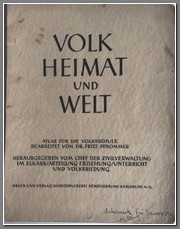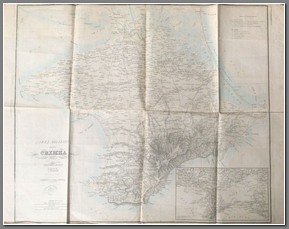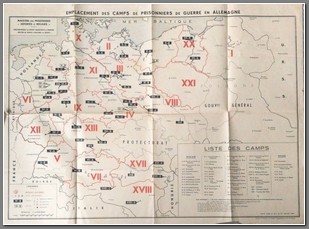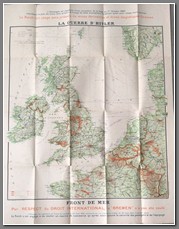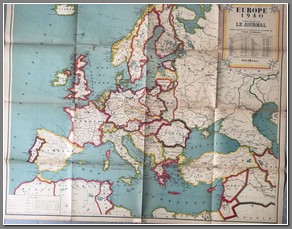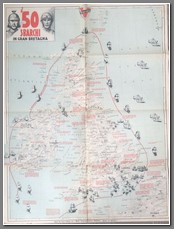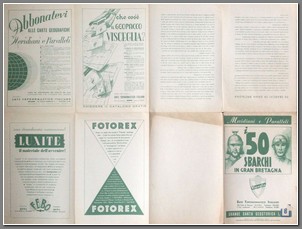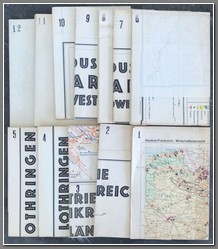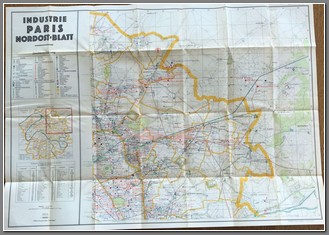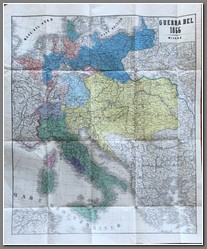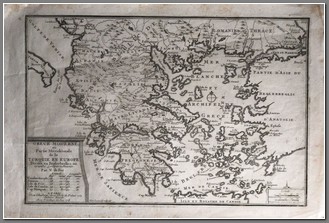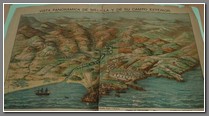MP 596
French map titled La Guerre d’Hitler…. Fronte de Mer. Fascinating map that details Hitler’s violations of war at sea. It translates as: Germany is a signatory to a Hague Convention of October 1, 1907 prohibiting the laying of mines without notice and the use of those likely to explode after having broken their moorings. The Reich made use of drift mines and fairground magnetic mines without warning.......In respect of international law, the "Bremen" was not sunk. Germany is a signatory to the Treaty of London of August 22, 1930, sanctioned by an order from Hitler of August 28, 1939, Treaty by which the Reich undertook not to sink a commercial ship until it had ensured the safety of the passengers. and crew. The maps shows locations of coal and mineral deposits in Northern Europe as well. Interesting reference to the sinking of the “Bremen”. The nazis tried to use this a justification for maritime treaty violations. However, the ship had been set alight by a 14 year old sailor. Size: 112x87cm.
Price: $500.00
NOTE FROM WIKIPEDIA: On 26 August 1939, in anticipation of the invasion of Poland, the Kriegsmarine high command ordered all German merchant ships to head to German ports immediately. Bremen was on a westbound crossing and two days from New York when she received the order. Bremen's captain decided to continue to New York to disembark her 1,770 passengers. She left New York without passengers on 30 August 1939 and on 1 September, coincident with the start of the Second World War, she was ordered to make for the Russian port of Murmansk. Underway, her crew painted the ship grey for camouflage. She made use of bad weather and high speed to avoid Royal Navy cruisers, arriving in Murmansk on 6 September 1939. With the outbreak of the Winter War between Finland and the Soviet Union, on 10 December 1939 Bremen made a dash to Bremerhaven, arriving on 13 December. On the way she was sighted and challenged by the S-class submarine HMS Salmon. While challenging Bremen, an escorting Dornier Do 18 seaplane forced Salmon to dive for safety. After diving, Salmon's commander, Lieutenant Commander E. O. Bickford, decided not to torpedo the liner because he believed she was not a legal target. His decision not to fire on Bremen likely delayed the start of unrestricted submarine warfare. Bremen was then used as a barracks ship; there were plans to use her as a transport in Operation Sea Lion, the intended invasion of Great Britain. On 16 March 1941, Bremen was set alight by 14-year-old crew member Walter Schmidt while at her dock in Bremerhaven and completely gutted. A lengthy investigation discovered that the arson resulted from revenge stemming from a ship's officer who had punished him for not completing his assignment, not an act of war. Schmidt was later guillotined for the arson, becoming one of the youngest people to be judicially executed by the regime at age 15.

